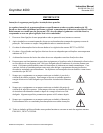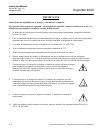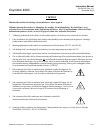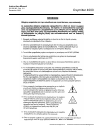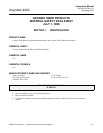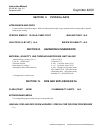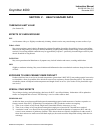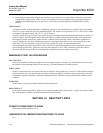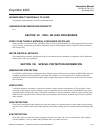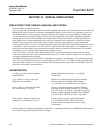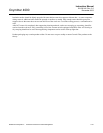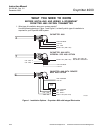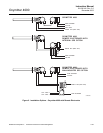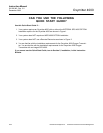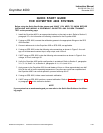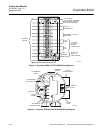
Instruction Manual
IB-106-340 Rev. 3.0
December 2003
Rosemount Analytical Inc. A Division of Emerson Process Management P-19
Oxymitter 4000
INCOMPATIBILITY/MATERIALS TO AVOID
Incompatible with hydrofluoric acid and concentrated alkali.
HAZARDOUS DECOMPOSITION PRODUCTS
N.A.
SECTION VII. SPILL OR LEAK PROCEDURES
STEPS TO BE TAKEN IF MATERIAL IS RELEASED OR SPILLED
Where possible, use vacuum suction with HEPA filters to clean up spilled material. Use dust suppressant where sweep-
ing if necessary. Avoid clean up procedure which may result in water pollution. (Observe Special Protection Informa-
tion Section VIII.)
WASTE DISPOSAL METHODS
The transportation, treatment, and disposal of this waste material must be conducted in compliance with all applicable
Federal, State, and Local regulations.
SECTION VIII. SPECIAL PROTECTION INFORMATION
RESPIRATORY PROTECTION
Use NIOSH or MSHA approved equipment when airborne exposure limits may be exceeded. NIOSH/MSHA approved
breathing equipment may be required for non-routine and emergency use. (See Section IX for suitable equipment).
Pending the results of long term health effects studies, engineering control of airborne fibers to the lowest levels attain-
able is advised.
VENTILATION
Ventilation should be used whenever possible to control or reduce airborne concentrations of fiber and dust. Carbon
monoxide, carbon dioxide, oxides of nitrogen, reactive hydrocarbons and a small amount of formaldehyde may accom-
pany binder burn-off during first heat. Use adequate ventilation or other precautions to eliminate vapors resulting from
binder burn-off. Exposure to burn-off fumes may cause respiratory tract irritation, bronchial hyper-reactivity and asth-
matic response.
SKIN PROTECTION
Wear gloves, hats and full body clothing to prevent skin contact. Use separate lockers for work clothes to prevent fiber
transfer to street clothes. Wash work clothes separately from other clothing and rinse washing machine thoroughly after
use.
EYE PROTECTION
Wear safety glasses or chemical worker’s goggles to prevent eye contact. Do not wear contact lenses when working
with this substance. Have eye baths readily available where eye contact can occur.



